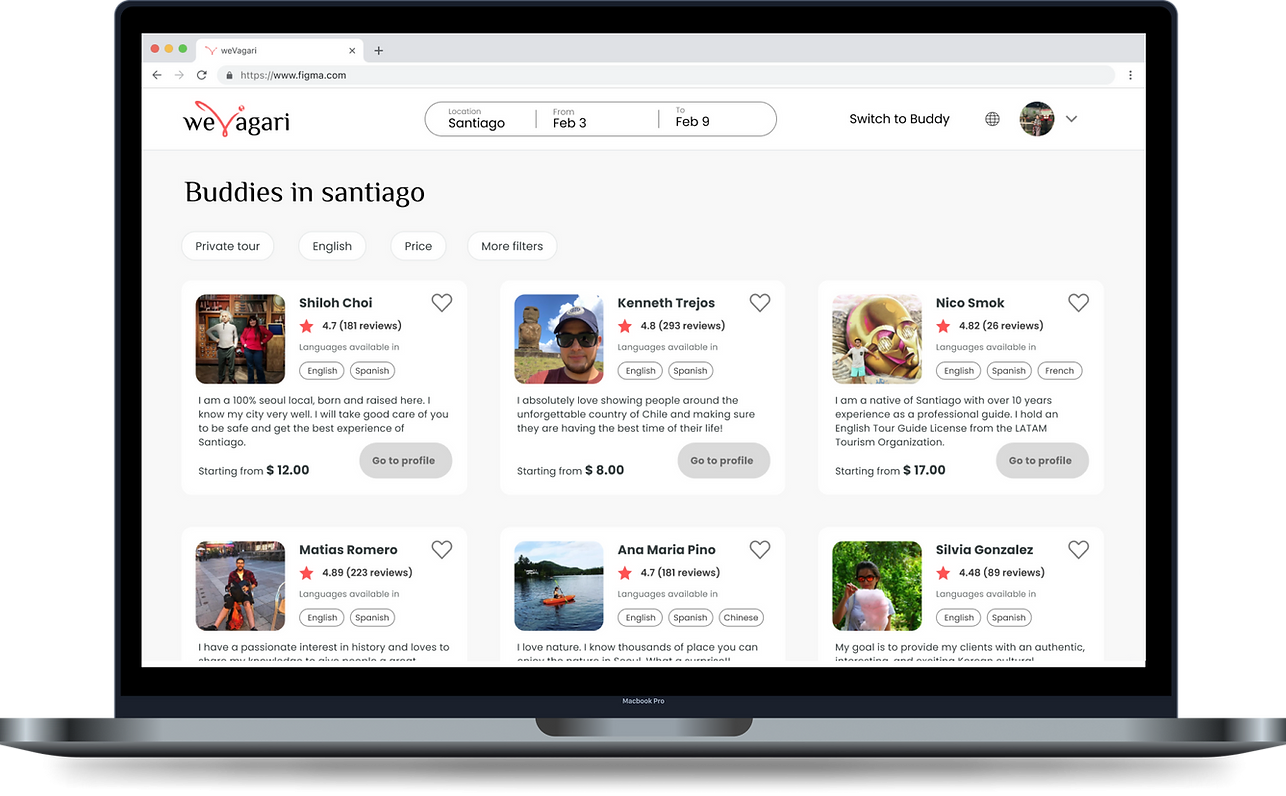weVagari
An all-in-one platform where you can plan your trip, connect with a local buddy to customize your itinerary, and travel with added safety and peace of mind.
Date: 2018
Status: Ideation
My contribution as a co-founder & product designer
Led product ideation, UX research, and interaction design.
Created detailed user flow diagrams and interactive prototypes.
Facilitated stakeholder discussions to align design decisions with business objectives and user needs.
BackgroundSafety is a major concern for female travelers—73% worry about it when traveling solo, dropping slightly to 64% among experienced solo travelers. Yet, the travel industry often overlooks these concerns, while cultural biases can also pose risks for POC and gender-diverse communities.
Who is it forSo far, we interviewed over 80 female solo travelers, POC, and gender diverse groups from 23 different countries to validate the problem and we iterated our solution accordingly to ensure that our platform is beneficial for them to travel safely.
83% worry about travel safety
76% have experienced violent harassment
Our solutionWeVagari is a virtual travel platform for females, POC, and gender diverse people. The word Vagari comes from Latin, meaning "to wander". WeVagari means- we wander around the world with freedom. Our mission is to make travel safer and more accessible by removing concerns around safety, discrimination, and cultural barriers.
-
Travelers are connected with trusted local “Buddies” who offer guidance, local insight, and real-time support.
-
The platform bridges the gap between generic trip planners and personalized travel experiences through real-time, culturally aware connections.
Research & Discovery - 1st IterationThe project began as Trippin, a social platform for avid travelers to share experiences. but market research showed it lacked differentiation in an already saturated space—users couldn’t clearly see its unique value.
Ideation & Concept Development - 1st IterationWe designed and tested social-sharing flows, but early validation revealed low differentiation from existing travel platforms—reinforcing the need to pivot.
Mobile mockup images of the 1st iteration (Social media platform)Pivoting Research & DiscoveryFurther research revealed that women travelers face unique safety challenges, which we validated through interviews, surveys, and community outreach—prompting a pivot toward a safety-focused travel support platform.
Ideation & Concept DevelopmentWe designed user flows that connect travelers with local buddies and built key features like real-time chat, itinerary tools, and safety alerts—centered around the needs of solo travelers.
Prototyping & Early ValidationWe built early prototypes to test core features and flows, then refined the platform through usability testing with real users.
Let’s see how it works!
1. Plan with Confidence
“I love planning trips, but it’s hard to keep everything in one place.”
With WeVagari’s trip planning tool, I can save all my ideas—from places to visit to booked flights—on one easy drag-and-drop map. Everything I’ve researched and pinned is organized into my custom itinerary, so I can explore and plan without juggling tabs or apps.
2. Meet a Trusted Local
“I’ve never been to Chile before—what if I need help on the ground?”
That’s when I found my Buddy—someone who lives in Santiago and knows the city inside out. I browsed trusted locals, checked reviews, and chose someone who speaks my language and understands what solo travelers like me worry about. He even helped me shape my trip based on what’s happening locally.
What My Buddy Can Do
Introduction 90s video
Impact & OutcomeWevagari’s early impact came through testing with local ambassadors in places like 🇦🇿 Azerbaijan, 🇨🇷 Costa Rica, and 🇰🇷 South Korea—helping us understand the real challenges of solo female travelers and begin forming a values-driven, safety-first travel community.
Key Learnings












